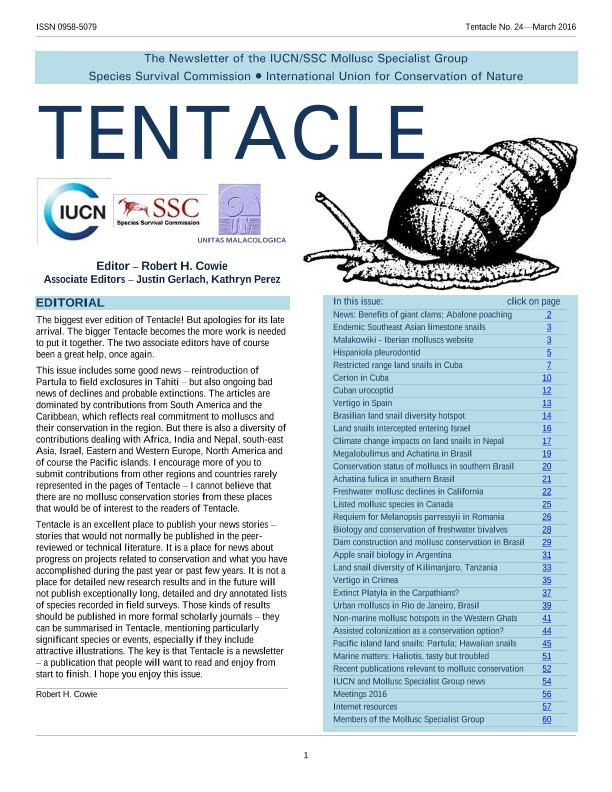Artículo
Life history and reproductive and thermal biology of Asolene Platae, an Apple Snail from the Río de la PLata basin (Argentina)
Fecha de publicación:
03/2016
Editorial:
International Union for Conservation of Nature. Mollusc Specialist Group of the Species Survival Commission
Revista:
Tentacle
ISSN:
0958-5079
Idioma:
Inglés
Tipo de recurso:
Artículo publicado
Clasificación temática:
Resumen
The Neotropical apple snails that lay subaquatic, gelatinousegg masses (species of Asolene, Felipponea and Marisa) havereceived less scientific interest than those apple snails that lay masses of calcareous shelled eggs above the waterline (genus Pomacea). Basic and applied research has concentrated so faron two species of Pomacea that have become important pestsof aquatic crops (mainly rice) as well as drivers ofecosystemic changes in invaded wetlands. Up to now, conservation orientedresearch and conservation efforts have been aimed only at theFlorida apple snail, Pomacea paludosa, which is the staplefood of an endangered raptor, the snail kite. As part of a broader research program that commenced five years ago on the natural history, invasion and conservation biology of Argentinean apple snails (Martín et al., 2013), weundertook a study of the life cycle and the reproductive andthermal biology of Asolene platae.
Palabras clave:
Gelatinous Egg Masses
,
Vulnerability
Archivos asociados
Licencia
Identificadores
Colecciones
Articulos(INBIOSUR)
Articulos de INSTITUTO DE CIENCIAS BIOLOGICAS Y BIOMEDICAS DEL SUR
Articulos de INSTITUTO DE CIENCIAS BIOLOGICAS Y BIOMEDICAS DEL SUR
Citación
Tiecher, María José; Burela, Silvana; Martín, Pablo Rafael; Life history and reproductive and thermal biology of Asolene Platae, an Apple Snail from the Río de la PLata basin (Argentina); International Union for Conservation of Nature. Mollusc Specialist Group of the Species Survival Commission; Tentacle; 24; 3-2016; 31-33
Compartir




